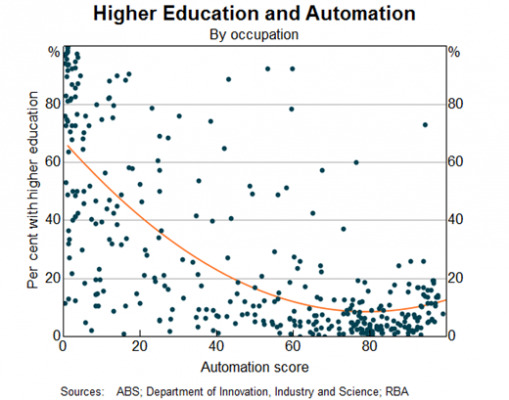In 2019, there were a few challenges that we repeatedly saw local councils grappling with as an impediment to economic development in their area. This is the first in a four-part series where our economics team looks at the impact of skill shortages – the first of these common challenges – and shares what local economic development officers are doing to address that issue and help support local industries.
Series: What blocked economic development in 2019?
- Part 1 – skill shortages
- Part 2 – natural disasters
- Part 3 – part-time / casualisation of the workforce
- Part 4 – what happens when the population tap is turned off
This series arose from our consultations with local economic development officers and other local government departments in our preparation of economic health checks for both metro and regional councils. If you’re involved with economic development at the local government level, learn more about our economic health checks here.
Barriers to local economic development in 2019
Part 1 – Skill shortages
One of the economic themes that emerged from our work with Councils in 2019 was the rise in skill shortages across Australia. Research by the RBA shows that skill shortages are at the highest level since the GFC (see Chart 1 below). Back then, this was driven by the mining construction boom.
But what is the driver now?
The RBA suggests that one factor is the underinvestment in staff training post-GFC as businesses reduce costs. The decline in the VET sector also illustrates the ongoing underinvestment in skill development.
This is not great news for our economy given the high levels of youth unemployment, high under-employment and areas that have a high share of lower-skilled workers.
And just recently, Australia was found to be falling behind in STEM diversity. These factors combined might start to explain why this recent skill-shortage event has not corresponded with above-average wage growth.
Chart 1- Skill Shortages
Difficulty finding suitable labour (% of firms)
Source: NAB Quarterly Business Survey

In our recent economic analysis for a Regional Council in NSW we found that skill shortages vary from State to State and region to region.
(For a detailed analysis of skill shortages and other barriers to growth in your region, contact us for more information about our economic health checks here.)
In Regional NSW for example, employers found it difficult recruiting for:
- Automotive Trade (e.g. Automotive electrician)
- Nurses (especially midwife)
- Construction Trades (e.g. Fibrous plaster)
- Engineering Trades (Sheetmetal trades worker)
As illustrated in the chart below, employers in NSW are finding it increasingly difficult to fill vacancies for many of these occupations.
Chart 2- Occupations facing skill shortages

A full list of occupations facing skill shortages by State (Metro and Regional) can be found here.
Why do skills matter to economic development?
Technology has clearly impacted on the type of jobs in demand with high demand for non-routine cognitive jobs and less demand for routine manual based work. There is also a wave of emerging skill needs such as Python, SQL and understanding customers better (see here for emerging skills requested by employers).
Chart 3- Changing nature of skills

There is also a higher chance of job automation if the occupation has low post-school qualifications (chart 4).
Chart 4- Impact of automation on low skilled jobs

And the impact of automation will vary from region to region as shown in the diagram below that plots LGAs based on their level of educational attainment and level of job growth. Identifying and understanding these local drivers and challenges is crucial in designing targeted and prioritised interventions.
Chart 5 – Impacts of automation will vary from region to region
Source: NIEIR and ABS Census of Population and Housing

What can Local Government do?
While Council can scarcely influence these conditions, understanding the nuances of how these factors impact their local economy is critical in preparing a strategy to respond.
There are many factors that influence local skill shortages, such as
- the mix of industries
- local skill profile and education levels
- migration patterns
- the local age profile
The challenge for the local economic development officer is knowing where to look– identifying the biggest threats to their local economy, and prioritising programs and investment in the right areas.
In some regions, the priority might be to improve skills and training opportunities through facilitating partnerships between government, industry; education providers and community leaders. For other regions, the priority might be to influence education providers to re-train and transition workers from traditional manufacturing sectors. While for others, grass-roots actions to increase the number of students finishing year 12 may be required.
In our recent Economic Health Check for a Council in Regional NSW, we identified several factors driving skill shortages in their LGA. Some of the factors included:
- High demand for Mechanical Engineering Trade Workers (Regional NSW skill shortage) from dominant industries in the LGA (e.g. machinery repair, manufacturing, mining and wholesale)
- Emerging demand for labour created by major projects
- The outflow of resident workers to major projects beyond the home LGA (e.g. road construction and mining construction)
- A mismatch between resident skill profile and industry needs
- Out-migration of skills, particularly from a younger workforce
- Relatively low levels of skilled in-migration
- Ageing population
Our analysis of skill shortages and other local economic conditions that affect economic development has helped the council develop a targeted action plan to address these issues and focus on the highest-value opportunities. This evidence base can now help the Council move in the right direction and help their community thrive.
Identify the risks and opportunities in your area
Our economic health checks identify the key challenges and opportunities for your local industries, so you can prioritise programs and investment in the right areas. If you’re involved with economic development at the local government level, learn more about our economic health checks here.














